The Covid-19 pandemic began in earnest months ago, but the novel coronavirus that causes the disease remains somewhat shrouded in mystery.
A team of medical researchers in Cambodia are doing their part to change that. The Kingdom’s healthcare system may be small and under-resourced, but with new technology, labs in Phnom Penh could play an important role in dissecting the inner workings of the novel coronavirus currently infecting patients around the world.
Much of that work is now happening between a team of Cambodian laboratory technicians led by National Institutes of Health (NIH) researchers Jessica Manning and Jennifer Bohl, working alongside the Virology unit of the Institut Pasteur du Cambodge, led by Philippe Dussart and Erik Karlsson.
They are part of a race against the clock to decode Covid-19 in order to produce a vaccine that will protect millions and end a global pattern of rolling lockdowns. But even with the benefit of a worldwide network of virus-hunters, they say it could still be well over a year before a vaccine is ready for widespread use.
Before the novel coronavirus landed in the Kingdom, Manning was working in Cambodia with the National Institute of Allergy and Infectious Diseases’ (NIAID) Laboratory of Malaria and Vector Research. She was using software called IDSeq to identify and track pathogens by their genetic code, with her work involving digging into the various types of microbes associated with fever-causing diseases in Cambodia, such as dengue.
That software, IDSeq, has come to be Cambodia’s weapon in the global race to unravel the mysteries of this new virus.
Created by American biochemist Joe DeRisi, IDSeq is a cloud-based, open-source software that helps researchers log new viruses when they encounter them in the wild and compare them to previously identified ones. The programme was first put to the test in 2003 when it was used to map the genome of the coronavirus strain that caused the SARS outbreak in East Asia, a virus researchers now say is closely related to Covid-19.
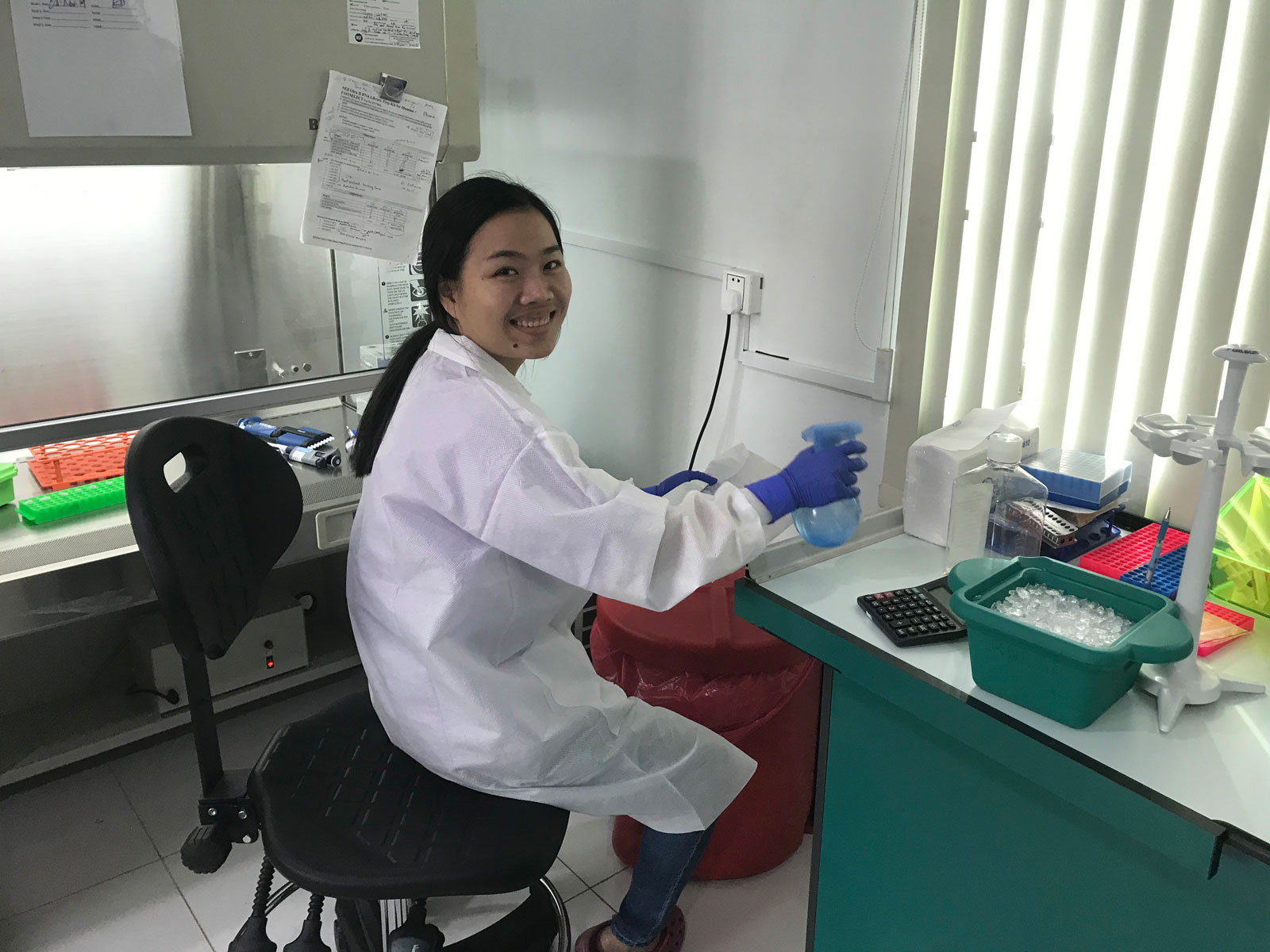
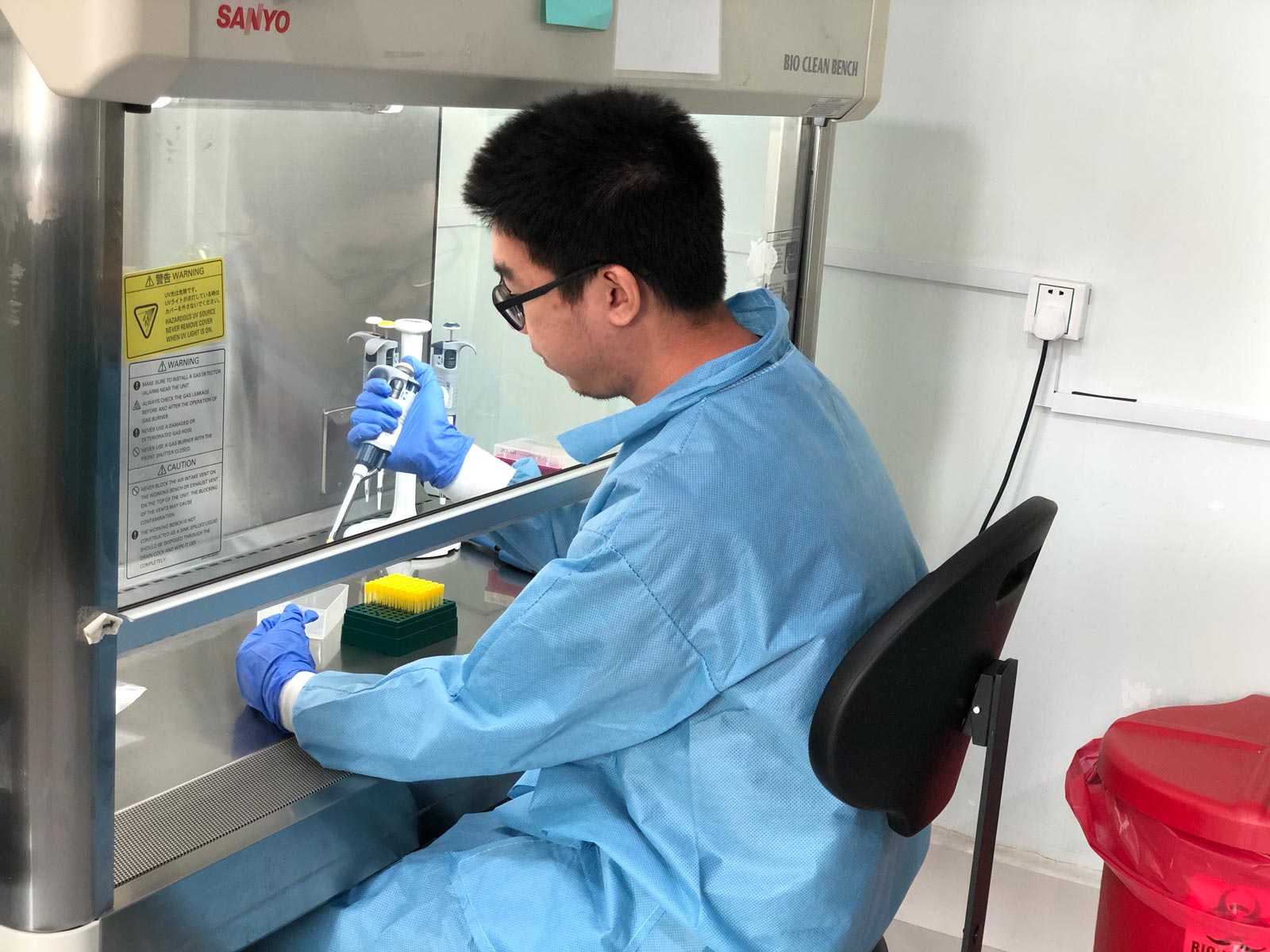
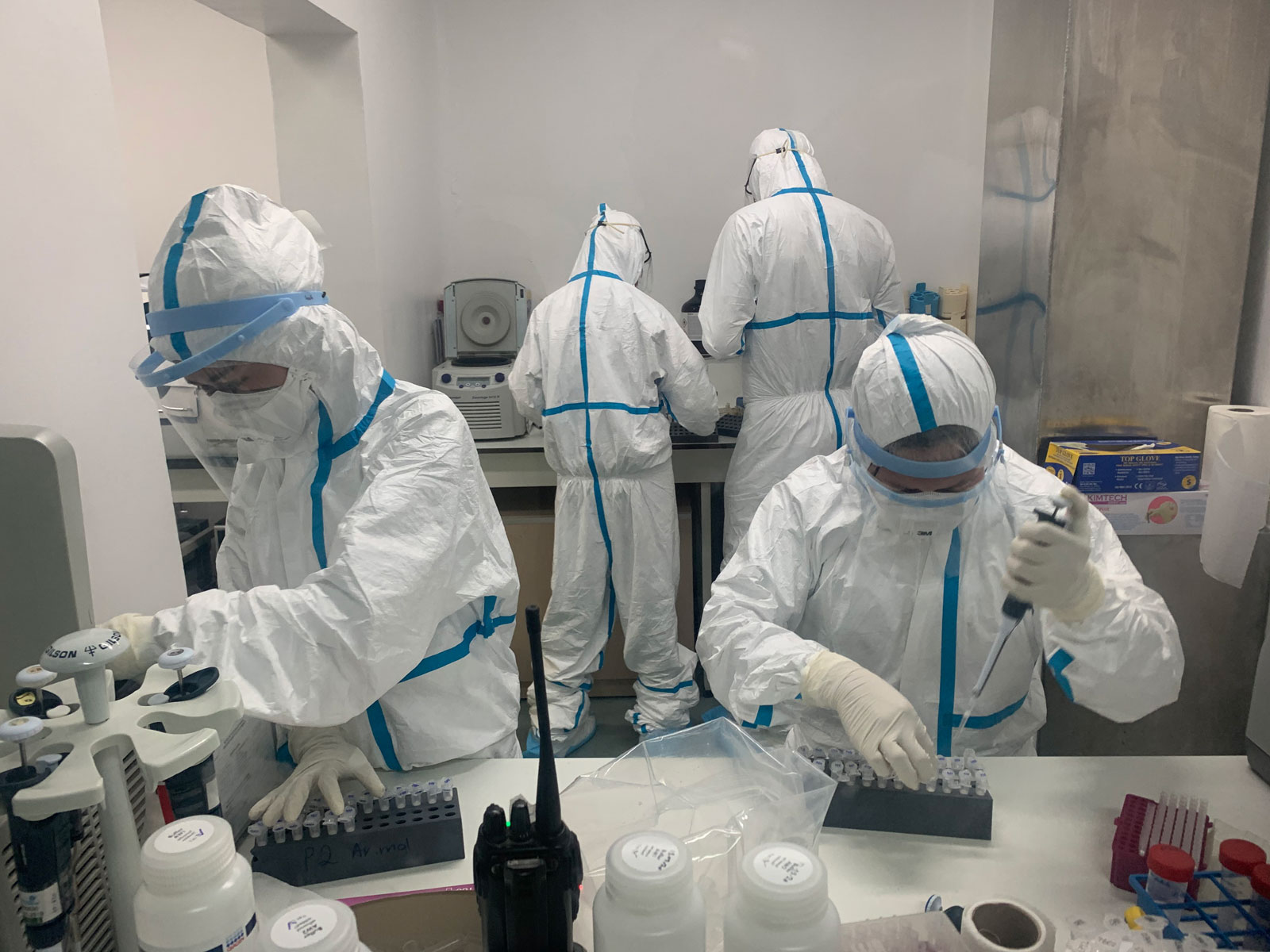
In early January, reports of pneumonia cases started coming out of a wet market in the Chinese city of Wuhan, the bustling capital of Hubei province of some 11 million residents. But while much of the world watched idly from afar, Pasteur Institut epidemiologist Karlsson was contacting Manning to initiate a collaboration between their organisations.
Given Cambodia’s proximity to China, and the highly linked nature of their economies, both were aware they would soon have a chance to encounter the novel coronavirus.
Sure enough, in late January the first case of Covid-19 landed on the shores of Cambodia through a Chinese traveller in the coastal resort city of Sihanoukville. The man had arrived on a direct flight from Wuhan with a fever and was promptly enveloped into quarantine. Staff from the Pasteur Institute took nasal swabs from Cambodia’s apparent patient zero to confirm the virus, before handing over the sample to Manning and her team to analyse.
They were successfully able to sequence the virus DNA and match it with the novel coronavirus strains coming out of China – making them among the first to have the virus’ genome sequenced in Southeast Asia, a region close to the outbreak’s epicentre.
“What we’ve been able to do is identify [the virus from] December 3, all the way until today,” Manning told the Globe during an online video chat interview in Phnom Penh this week, conscious of social distancing. “We can use the genetic mutations to track the virus, and this is all done as a global collaborative effort.”
The information logged by Manning’s team in Cambodia represents just one addition to the global fight against the novel coronavirus. The small team in Phnom Penh is part of a mass effort of scientists around the globe sequencing and uploading information about the virus into IDSeq, with each addition building a better understanding of the microbe that causes Covid-19.
Genome tracking is an already field-tested method of tracing pathogens in developing countries and, in an application valuable to epidemiologists, finding pathways of infection both within and beyond borders.
In some cases, this genome tracking has filled in the blanks with the benefit of hindsight. For example, the mosquito-borne Zika virus had been spreading for two years in Brazil before public health officials there declared their first case, at which point virologists pieced together the virus genome sequences. Other cases have been more proactive. In 2014, researchers in Sierra Leone used real-time tracking of the Ebola virus genome to confirm the spread was mainly caused through patient-to-patent transmission. They were then able to use that information to adopt preventative measures to stop the growth of the outbreak.
The power of genome tracking hasn’t gone unnoticed by major players in tech philanthropy. In 2016, the Chan Zuckerberg Initiative, a public health enterprise led by Dr Priscilla Chan, a physician who is married to Facebook founder Mark Zuckerberg, appointed DeRisi head of the Chan Zuckerberg Biohub – a $600 million campaign to fight infectious disease.
The Biohub then teamed up with the Bill and Melinda Gates Foundation to push genome sequencing technology into under-resourced countries at the forefront of new disease outbreaks. Grants from the Gates Foundation provided a portable genome sequencer box and IDSeq software training for researchers around the globe to log and analyse microbe samples in their countries.
Manning was awarded one such grant, supporting her work searching for pathogens in blood samples taken from across Cambodia following a severe dengue outbreak in 2019. So when the novel coronavirus first reared its head in Sihanoukville in January 2020, her team were ready to pivot and analyse it.
Now, Manning says gene sequencing can be used to trace the pathways of the novel coronavirus as it continues to radiate outward from its likely place of origin in Wuhan.
If we develop a vaccine [for COVID-19], since it’s not mutating so quickly, we’re not going to have to quickly generate a new vaccine. For the flu, we have to generate a new one every year
Erik Karlsson
“The big part about us being able to do it here is contributing to the global effort on behalf of the greater Mekong sub-region that otherwise doesn’t really have sequencing capacities in the country,” Manning said, adding that each contribution of data can be vital in understanding – and eventually ending – the spread of the virus.
“We can use that [data] to look at different transmission changes to see how it’s moving, either in a region or a country, around the world,” Manning explained. “That’s the main point of this research, to share it globally.”
Fellow NIH researcher Jennifer Bohl, also present during the video interview, explained that the genome sequencing’s main function is not to replace medical kits for widespread testing, but it is intended to give a broader picture of how the virus is evolving and spreading.
“This [sequencing] is at a higher level, looking at how you could implement public health measures [to stop the virus’ spread], not something that would be used as a basic diagnostic,” she said
The importance of such top-down, wide sequencing is critical when it comes to getting information about the coronavirus out into the public sphere.
“As soon as the Chinese put up their sequences, which we’re very thankful came out early, people were already rolling on making vaccines. We based all of our diagnostics on these early sequences. So it’s incredibly significant.”
So far, the findings have given cause for tentative optimism, particularly in terms of creating an effective vaccine. Manning said international researchers have discovered that the genetic makeup of the novel coronavirus has held relatively stable with minimal deviation, even as it’s transmitted through hundreds-of-thousands of cases globally.
“It’s only about four to 10 mutations, overall, even after passing through 500,000-plus people,” she said. Compared to other viral diseases like the flu, which can rapidly mutate, causing serious epidemics like the 2009 H1N1 Swine Influenza, that’s a reassuringly low level of genetic drift.
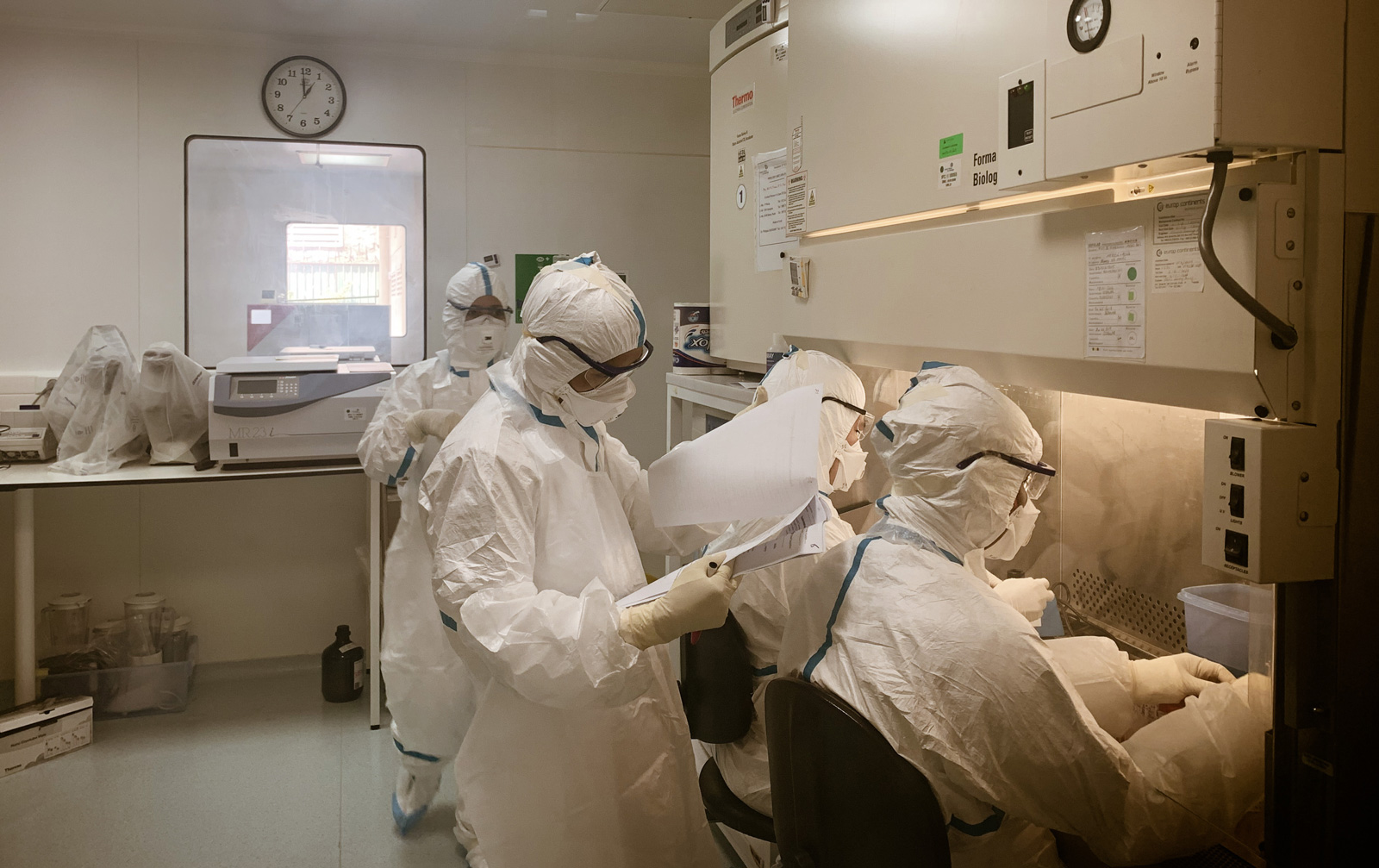
Covid-19 has been compared to the flu in terms of its severity, a parallel that doctors say is dangerously untrue. Using that more familiar disease as an example, the Pasteur Institute’s Karlsson explained why it’s so important to determine the genetic stability of each virus individually.
“Basically, every time the flu replicates in your body, it changes,” he said. “The error rate on its replication is basically one error per flu particle, and that’s why it changes so quickly. The error rate for this virus is actually much less, so we’re not seeing that.”
The difference for vaccine-makers is like that between shooting at a still target and a moving one.
“Understanding the genetic properties of this virus allows us to understand the receptors, it allows us to understand how vaccines might work,” Karlsson said. “But it also means that if we develop a vaccine, since it’s not mutating so quickly, we’re not going to have to quickly generate a new vaccine. For the flu, we have to generate a new one every year.”
This is light years in research time … Nobody’s ever moved a vaccine this quickly, going from the time a virus is published to one month later, having it mass-produced for use in humans
Jessica Manning
Researchers across the world are racing to produce a vaccine. Even still, according to Manning, this will take a minimum of 18 months – provided there are no setbacks during trials.
“This is like, light years in research time,” she cautioned. “Nobody’s ever moved a vaccine this quickly, going from the time a virus is published to one month later, having it mass-produced for use in humans.”
That 18-month figure is a best case scenario for global research and production. Even if a vaccine is finished in that time, Manning said, hundreds of thousands of people may already be dead from COVID-19. As of publishing, the disease caused by the novel coronavirus has claimed over 44,000 lives, infected close to one million people, and affected nearly every country on earth.
This isn’t the first time a coronavirus has devastated lives around the world. Just in the past 20 years, it was SARS and MERS – cousins of the novel coronavirus – that infected thousands and sent public health institutions into overdrive.
Then, much like now, scientists worked to produce vaccines to immunise against the lung-destroying illnesses. But unlike today’s virus, those earlier strains lacked the global impact that motivates a sustained response from funders.
As recently as 2016, scientists in Texas were working to finish a vaccine for SARS. The true human toll of that disease, which caused an outbreak in 2002-04 and was shrouded in secrecy by the ruling party of China, killed at least 770 people in that country.
Even with its demonstrated deadliness, the Texas SARS team never got to finish their vaccine, with the researchers seeing funding dry up before human testing could be implemented.
Dr. Peter Hotez, a researcher who led that effort, recently told journalists his team applied for additional funding and grants but could not find enough interest to continue their research.
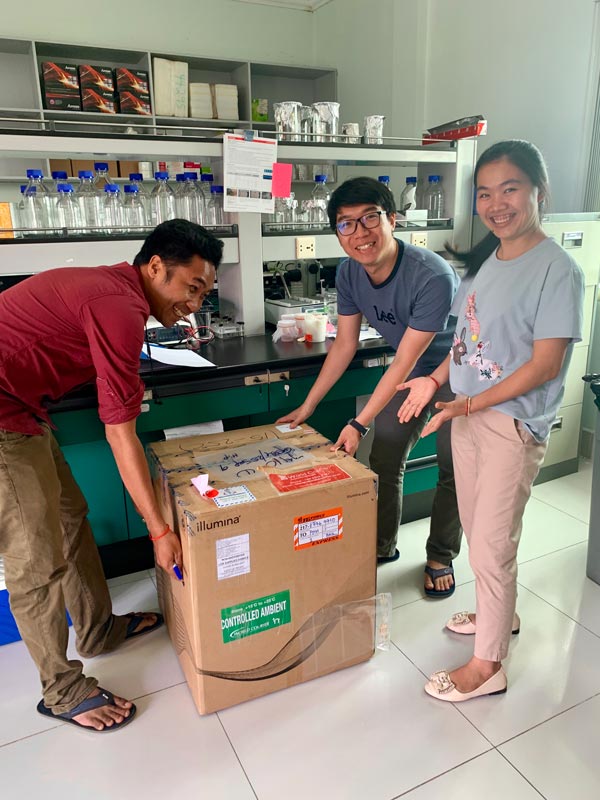
“We could have had this ready to go and been testing the vaccine’s efficacy at the start of this new outbreak [Covid-19] in China,” Hotez said.
He believes the vaccine could have provided cross-protection against the new coronavirus.
“Because nobody would invest a few million dollars into these SARS vaccines, we’re looking at, I don’t know what the number is, $10 billion, $100 billion in economic losses,” he said.
“Unfortunately, like most diseases when they disappear, the research funding disappears as well,” Karlsson explained, saying that before this current outbreak there were only 12 research labs in the world dedicated to studying coronaviruses like SARS and MERS.
“And it’s lucky we have them, because they are the ones that are really putting out the drug and vaccine candidates [for Covid-19].”
Cambodia has officially logged only 109 confirmed Covid-19 infections to date and, with the help of international institutions, has engaged in contact tracing of affected individuals.
Testing in the Kingdom is limited to patients exhibiting respiratory symptoms who have either travelled outside the country or have had contact with a person known to have Covid-19. Using that criteria, health researchers in the country have optimistically reported that there is a very low current pattern of community transmission.
Cambodia’s low official infection rate has raised eyebrows internationally, partly due to its continued acceptance of direct flights from Wuhan into early February, long after other countries discontinued them. At least 3,000 residents of the city are thought to have entered Cambodia, whose economic fate political leaders have tightly intertwined with that of China, before connections were finally put to a halt.
After cases began climbing globally, Prime Minister Hun Sen was forced to change tack. He ordered a closure of all government and educational institutions on 17 March and, soon after, imposed a 30-day travel ban on visitors from the US, Italy, Germany, Spain and France – countries with severe outbreaks. Cambodia had not, however, banned travellers from China, the epicentre of the outbreak.
The reason behind these low rates, Manning hypothesises, comes down to a few practical aspects of Cambodian life, such as the lack of mass-transit systems and communal living revolving around being outside. “We ride open-air tuk-tuks, we don’t go to closed-in churches. It’s an open-air society,” she described.
Karlsson added that the warmer climate may also play a role in Cambodia’s low numbers, as early research has shown the virus may be susceptible to heat. However, he also cautioned against becoming complacent with these factors.
“There is always the chance that it is going to explode, and we have to be aware of that.”
While genome sequencing represents humanity’s best hope for developing a vaccine, Bohl concluded by saying that although immunisation remains a long way off, the potential for herd immunity could prove our saving grace.
“Because so many people are being exposed, they think they’ll have enough herd immunity. So that even if you didn’t get exposed, you may have enough immunity from everybody else who did,” she said.
In today’s Covid-19 world, this somewhat bitter pill to swallow may just pass as a source of hope.

